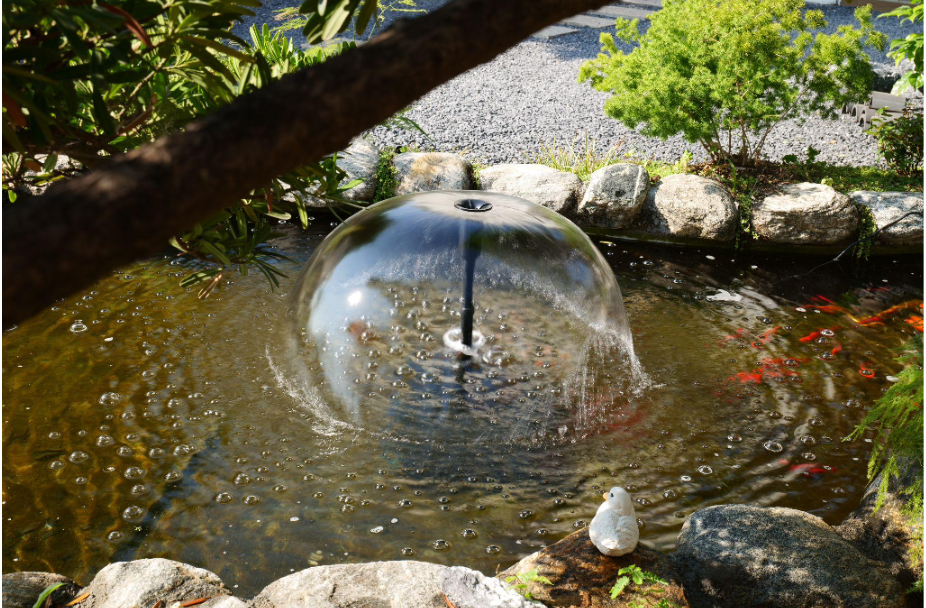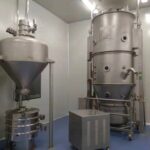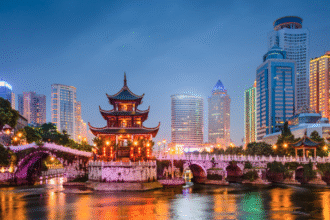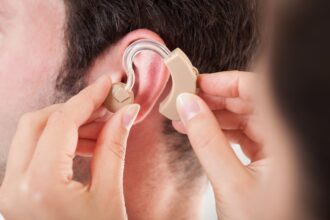A beautiful pond is the heart of any garden, offering tranquility, aesthetic appeal, and a thriving habitat for aquatic life. However, over time, pond water can become cloudy, smelly, and filled with algae, debris, or harmful bacteria, notes EPM Elite Properties team. If you’re wondering how to keep your pond crystal clear, you’re in the right place.
Cleaning Pond Water
Keeping your pond water clean isn’t just about looks; it’s about preserving the health and longevity of your pond and its inhabitants. Here’s why pond cleaning matters:
- Supports aquatic life: Clean water helps fish, frogs, and plants thrive.
- Prevents algae blooms: Murky water often leads to unsightly green growth.
- Reduces foul odors: Decomposing organic matter creates unpleasant smells.
- Enhances water clarity: Improves visibility and aesthetic appeal.
- Promotes a balanced ecosystem: Clean water maintains the natural biological cycle.
Let’s break down how to achieve and maintain clear pond water.
Common Causes of Dirty Pond Water
Before diving into cleaning methods, it’s essential to understand why pond water gets dirty:
1. Excess Nutrients
Pond water overloaded with nitrogen and phosphorus (often from fish waste or fertilizer runoff) encourages algae blooms and plant overgrowth.
2. Lack of Filtration
Without proper mechanical and biological filtration, organic matter builds up and decays, turning water cloudy and smelly.
3. Overfeeding Fish
Extra fish food sinks to the bottom and decomposes, leading to poor water quality.
4. Debris Accumulation
Leaves, twigs, and plant debris sink to the pond floor, creating sludge that affects clarity and smell.
5. Algae Overgrowth
String algae and green water algae thrive in nutrient-rich, stagnant water.
Natural Methods for Cleaning Pond Water
Natural pond cleaning is an eco-friendly and effective way to maintain clarity and balance without harsh chemicals. Here are proven methods:
1. Add Beneficial Bacteria
Adding beneficial bacteria helps break down sludge, uneaten food, and waste. These bacteria consume organic material and convert it into harmless compounds.
Tip: Choose a reputable, pond-safe bacterial supplement and apply it regularly for best results.
2. Use Aquatic Plants
Aquatic plants absorb nutrients and oxygenate the water, reducing algae growth.
Recommended plants include:
- Water lilies
- Water hyacinths
- Hornwort
- Anacharis
- Duckweed
3. Install a Floating Plant Island
Floating plants shade the pond and absorb excess nutrients. A plant island also provides cover for fish and inhibits algae.
4. Introduce Natural Predators
Certain fish, like koi and goldfish, eat algae and small pests. Snails and tadpoles can also assist in keeping the water clean.
Mechanical and Filtration Techniques
For larger or heavily stocked ponds, natural methods alone may not be enough. Here’s how mechanical filtration can help:
1. Install a Skimmer
Skimmers remove floating debris like leaves and twigs before they sink and decay. They reduce the overall organic load and improve water clarity.
2. Use a UV Clarifier
UV clarifiers expose pond water to ultraviolet light, killing single-celled algae and harmful bacteria. It’s an excellent solution for green water issues.
Tip: Pair a UV clarifier with a biological filter for optimal results.
3. Biological Filtration
Biological filters host colonies of beneficial bacteria that break down toxic waste. This system keeps ammonia and nitrite levels in check, ensuring water stays safe for fish.
4. Vacuum the Pond Bottom
Pond vacuums remove sludge and muck from the pond floor, preventing anaerobic bacteria from developing and releasing foul gases.
Manual Pond Cleaning Tips
Manual cleaning is necessary occasionally, especially after seasonal changes or heavy storms. Here’s how to do it effectively:
Step 1: Remove Debris
Use a pond net to scoop out leaves, twigs, and dead plants.
Step 2: Trim and Remove Excess Plants
Overgrown plants can shed leaves and add to the debris. Trim dead leaves and remove invasive species.
Step 3: Clean Rocks and Liner
Use a hose (without high pressure) to rinse the pond liner and rocks. Avoid using soap or chemicals.
Step 4: Partial Water Change
Replace 10–20% of pond water with fresh, dechlorinated water every few weeks. This dilutes built-up nutrients and improves clarity.
Tip: Always dechlorinate tap water before adding it to your pond, especially if it houses fish or amphibians.
Seasonal Pond Cleaning Guide
Each season demands specific care. Here’s what to focus on throughout the year:
Spring
- Remove winter debris
- Restart filtration systems
- Begin regular feeding of fish
- Add beneficial bacteria
Summer
- Watch for algae blooms
- Check the water temperature
- Ensure adequate aeration
- Top off evaporated water
Autumn
- Net the pond to catch falling leaves
- Remove dying plants
- Begin reducing fish feeding
Winter
- Stop feeding fish once the water drops below 50°F (10°C)
- Use a pond de-icer to maintain gas exchange
- Avoid breaking ice. Use hot water to open a hole instead
Pond Maintenance Tools and Supplies
To simplify your pond cleaning routine, consider investing in these tools:
- Pond net or skimmer
- Pond vacuum
- UV clarifier
- Biological filter
- Dechlorinator
- Beneficial bacteria
- Water testing kit
These items help ensure that your pond stays in peak condition year-round.
Eco-Friendly Cleaning Alternatives
If you want to avoid synthetic treatments, there are a few eco-conscious alternatives to consider:
1. Barley Straw
Barley straw releases natural compounds as it decays, which help reduce algae growth. It’s slow-acting but effective over time.
2. Rainwater Collection
Use a rainwater harvesting system to top up your pond. It’s free, chlorine-free, and better for the pond’s biological balance.
3. Natural Filtration Zones
Build filtration zones with gravel, aquatic plants, and slow-moving water. These mimic natural wetlands and help clean the water organically.
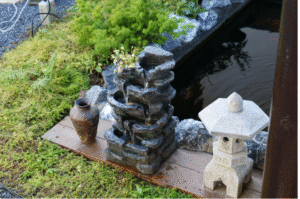
Reliable Solutions for Clear, Healthy Pond Water
If you’re looking for reliable pond products that support water clarity and ecosystem balance, Poposoap solar pond pumpsPoposoap solar pond pumps offer high-quality solutions. Their filtration systems and water treatment kits are designed with eco-conscious gardeners in mind, helping you achieve clear water without compromising your pond’s health.
Preventative Measures to Keep Pond Water Clean
Maintaining water quality is easier than restoring it. Follow these preventative measures:
- Don’t overfeed fish: Feed small amounts and remove uneaten food.
- Trim aquatic plants regularly: Prevent excess debris and decay.
- Monitor water chemistry: Use a testing kit to check ammonia, nitrite, pH, and oxygen levels.
- Install shade structures: Reduce sunlight exposure to control algae growth.
- Avoid using garden fertilizers near the pond: Runoff can spike nutrient levels and cause algae blooms.
Troubleshooting Common Pond Water Problems
Here’s how to identify and fix frequent pond water issues:
Green Water
- Cause: Excess nutrients and sunlight
- Solution: Add UV clarifier, beneficial bacteria, and floating plants
Foul Odor
- Cause: Decaying organic matter and poor oxygen levels
- Solution: Clean debris, aerate the pond, and introduce bacteria
Cloudy or Murky Water
- Cause: Suspended particles, sludge buildup
- Solution: Use a pond vacuum, skimmer, and fine mesh filter
String Algae
- Cause: High nutrient levels and warm temperatures
- Solution: Remove manually, shade the pond, and reduce feeding
When to Call in the Professionals
If your pond remains murky despite all efforts or if it has a complex setup with fish, plants, and waterfalls, it may be time to consult a professional pond cleaner. Services can include:
- Deep cleaning and water testing
- Equipment inspection and repair
- Algae control and fish health assessment
- Design upgrades and pond expansion
Professional services can be especially helpful for large ponds or when you’re unsure about the root cause of water quality issues.
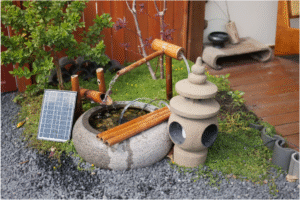
Final Thoughts
Cleaning pond water is essential for maintaining a beautiful and functional outdoor space. By combining natural methods, mechanical tools, and smart maintenance practices, you can keep your pond healthy, clear, and inviting. From small patio features to expansive koi sanctuaries, clean water supports life, enhances beauty, and brings peace to your garden.
Whether you’re starting a new pond or improving an existing one, remember that consistent care is the key to long-term success. For those who prefer ready-made solutions, Poposoap products are a great way to simplify pond care while keeping your water clear and balanced.


